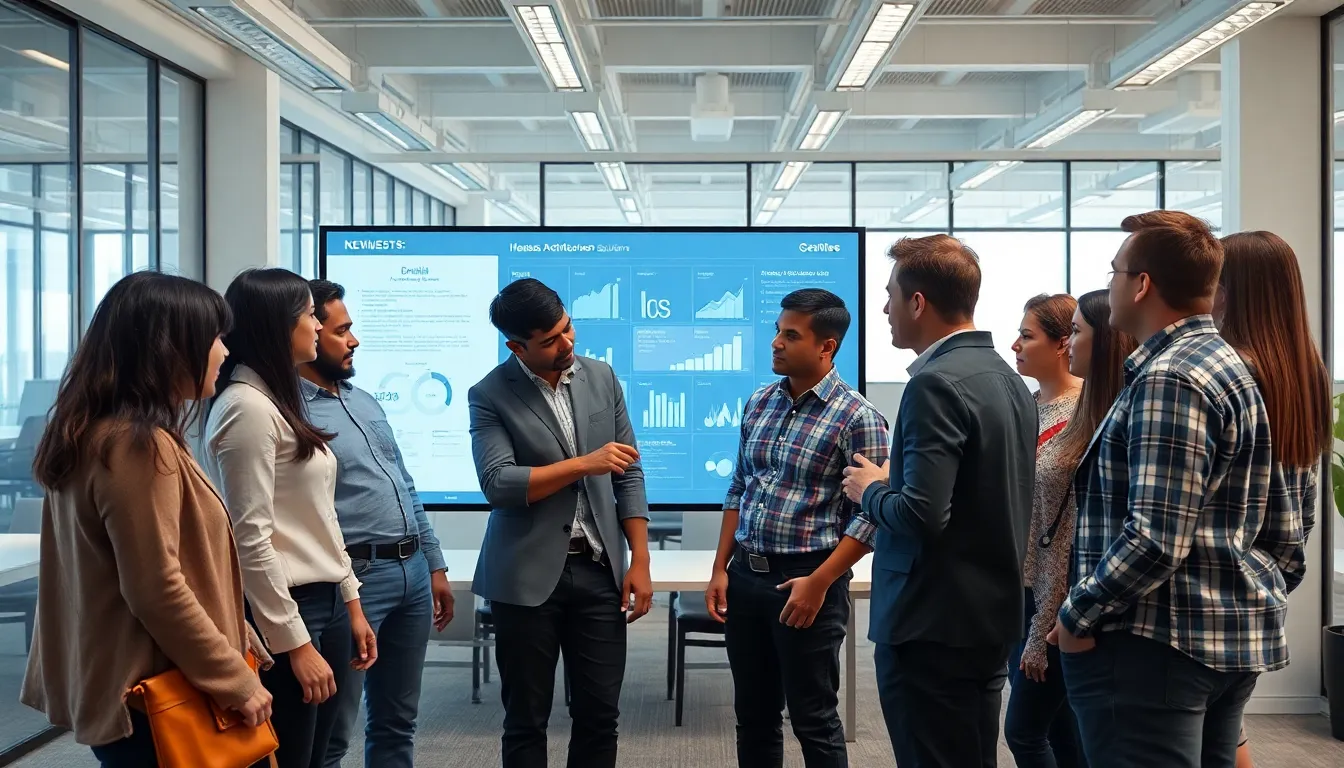Headless architecture is revolutionizing the way businesses approach web development and digital experiences. By decoupling the front-end presentation layer from the back-end content management system, organizations can deliver content seamlessly across multiple platforms. This flexibility allows for a more agile development process and enhances user engagement.
As digital landscapes evolve, companies are increasingly turning to headless solutions to meet the demands of modern consumers. With the ability to integrate various technologies and optimize performance, headless architecture empowers businesses to create tailored experiences that resonate with their audience. Understanding its benefits and applications is crucial for anyone looking to stay ahead in today’s fast-paced digital world.
Table of Contents
ToggleWhat Is Headless Architecture?
Headless architecture refers to a separation between the front-end and back-end components of a web application. In this model, the back-end, which includes the content management system (CMS), operates independently from the front-end user interface. Typically, APIs serve as the bridge between the two, enabling content to flow seamlessly across multiple platforms, such as websites, mobile apps, and IoT devices.
Headless architecture allows developers to create customized user experiences without the constraints of traditional CMS frameworks. Examples of headless CMS solutions include Contentful, Strapi, and Sanity, which provide flexibility in how content is delivered. By focusing solely on displaying data, businesses can optimize performance and enhance scalability.
Adopting headless architecture facilitates better collaboration among cross-functional teams. Designers can experiment freely with front-end designs while developers manage back-end integrations. This agility contributes to faster product iterations and improved responsiveness to market changes.
Headless architecture also supports omnichannel strategies, enabling businesses to deliver consistent content across various user touchpoints. This adaptability meets the demands of today’s consumers who expect seamless interactions with brands across different media. As a result, many organizations increasingly leverage headless architecture to stay competitive.
Advantages of Headless Architecture


Headless architecture offers numerous advantages that empower businesses to adapt quickly and efficiently in the digital landscape. Below are key benefits that this approach provides.
Flexibility and Scalability
Flexibility and scalability characterize headless architecture, enabling organizations to pivot their strategies effortlessly. Developers can select technologies that best suit their needs without being locked into a specific front-end framework. This separation allows for rapid modifications and updates, accommodating both emerging technologies and evolving user demands. Scalable solutions support varying traffic levels by adjusting resources as necessary, ensuring optimal performance. Businesses can also integrate multiple channels without significant infrastructure changes, allowing for a unified presence across web, mobile, and IoT platforms.
Enhanced User Experience
Enhanced user experience is a crucial advantage of headless architecture. With a decoupled back end and front end, developers can optimize the presentation layer to create engaging and interactive interfaces. Customization capabilities allow tailored experiences that resonate with specific audiences, driving higher user engagement. Additionally, faster load times and performance improvements contribute to satisfaction, with content delivery streamlined across devices. An omnichannel strategy ensures that users receive consistent interactions, bolstering brand loyalty and trust, which is vital in today’s competitive market.
Disadvantages of Headless Architecture
Despite its numerous benefits, headless architecture presents several challenges that organizations must consider. The complexity of implementation and potential high costs can impact the success of transitioning to this model.
Complexity in Implementation
Complexity in implementation often arises during the integration of various components in a headless architecture. Developers need to orchestrate multiple APIs, manage diverse technologies, and ensure seamless communication between front-end and back-end systems. This process demands specialized skills and significant development time, complicating the transition for teams unprepared for the intricacies involved. Providing adequate training and resources is crucial, as unforeseen issues may lead to project delays and increased frustrations.
Potential High Costs
Potential high costs associated with headless architecture stem from various factors. Organizations might face increased expenses for development, as custom solutions often require more time and specialized expertise compared to traditional models. Additionally, the need for robust infrastructure to support multiple APIs and services can increase operational costs. Substantial licensing fees for advanced headless CMS platforms may also contribute to overall expenditures. As businesses evaluate their budgets, they should weigh these costs against the anticipated benefits of increased flexibility and scalability.
Use Cases of Headless Architecture
Headless architecture offers various applications across different industries, significantly transforming how businesses interact with their customers and manage content.
E-commerce Applications
E-commerce platforms leverage headless architecture to enhance customer experiences and streamline operations. By utilizing APIs, businesses create responsive, tailored shopping experiences across websites, mobile apps, and social media. They can easily integrate payment gateways, inventory systems, or customer relationship management (CRM) tools. For instance, a retailer can present unique product recommendations based on user behavior, ensuring each customer receives a personalized shopping experience. Brands like Shopify Plus and BigCommerce provide headless options, enabling merchants to optimize their frontend user interfaces while relying on robust back-end infrastructure.
Content Management Systems
Headless architecture optimizes content management systems (CMS) by decoupling front-end presentation from back-end storage, allowing organizations to distribute content across multiple channels. Businesses can publish content to websites, mobile applications, and connected devices without redesigning back-end processes. For example, a media company can deliver fresh articles to its website and mobile app simultaneously, enhancing user engagement. Popular headless CMS solutions like Contentful and Sanity facilitate efficient content delivery and enhance collaboration among cross-functional teams. The flexibility in choosing front-end technologies enables developers to innovate, ensuring a consistent and dynamic user experience throughout various platforms.
Headless architecture is reshaping how businesses approach digital experiences. By decoupling front-end and back-end systems, organizations can respond quickly to evolving user needs and technology trends. This flexibility not only enhances user engagement but also fosters innovation across teams.
While challenges like implementation complexity and potential costs exist, the benefits often outweigh these hurdles. Companies that embrace headless solutions can achieve greater scalability and improved performance, ultimately leading to stronger brand loyalty. As the digital landscape continues to evolve, headless architecture will likely play a crucial role in helping businesses stay competitive and meet the demands of modern consumers.










